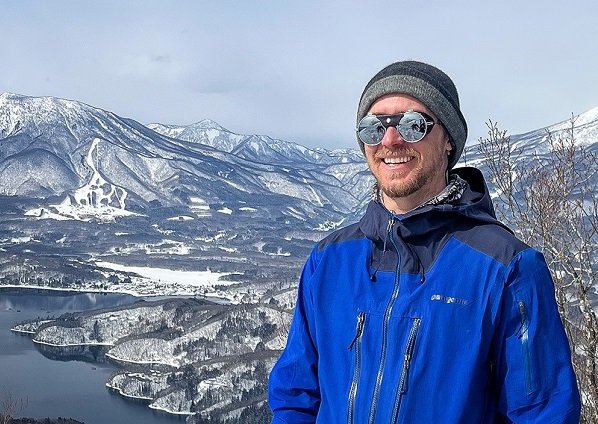I was cursing my luck while hiking up and over Mt Stirling through rain, sleet and mud to reach Craig’s Hut in August this year. I had a split-board strapped to my backpack weighing me down, and I was wearing snowboarding boots - this wasn’t part of the plan. The unseasonably warm August had stripped natural snow from all but the highest peak of the mountain when we should usually be seeing peak snow depths.

Why was I taking part in this act of masochism? For an off-grid backcountry screening of the film ‘Alpine Odyssey’, a project of adventurer Huw Kingston who documented his 2022 winter journey across 700km of Australia’s mountains. This unique screening was part of a wider film tour, raising funds for Save The Children and Protect Our Winters Australia, an organisation of which I am a director.
As we reached the summit of Mt Stirling, I looked over at the neighbouring Mt Buller. It was brown and bare, giving me flashbacks to 2006.
Anyone in the Australian snow community will remember just how shocking the 2006 season was. As a teenager representing Wesley in the Interschools competition at Mount Buller, I couldn’t believe I was racing on a tiny strip of man-made snow and then having to catch the chairlift down the mountain to get back to Buller’s village. The 2006 season broke me, seeing how much money and effort my family was investing only to see conditions this poor - I didn’t snowboard for years afterwards.
Back to 2024: two poor back-to-back snow seasons not so long after enduring the harsh COVID lockdowns are seeing Australia’s alpine communities hurting. People are nervous. What happens if the snow doesn’t fall next year too? This is why I’m involved with Protect Our Winters Australia (POW). Australia’s alpine regions are incredibly unique and bring so much joy to so many people, but they are under threat. POW offers the outdoor-loving community a way to unite and take action against the threats to our mountains - of which climate change is the big one.
POW is a completely volunteer run organisation, operating on the ‘smell of an oily rag’. Despite these challenges, we’ve gone hard this year - commissioning the most up to date scientific research looking at the economic, social and environmental impacts that climate change is having on Australia’s alpine regions in the form of the Our Changing Snowscapes report. Authored by Australian National University and the Australian Mountain Research Facility, the research highlights a series of interconnected effects on alpine tourism, regional communities, hydroelectricity, high country water flows to the Murray-Darling Basin, carbon sequestration, high country ecosystems, and First Nations communities. Simply put, the mountains are far more than just a destination for snow sports - these places are critical to our nation.
Within a week of releasing Our Changing Snowscapes, we had over 420 press appearances, leading to several meetings in parliament to raise the profile of the challenges our mountains and our alpine communities face with our political class. The reality is, Australia’s mountains are the most at risk to climate change impacts in the world - but it is not too late to save them.
Australia’s alpine regions are considered the ‘canary in the coal mine’ by the rest of the world. What happens to our snow, our environment and our regional economies offers a look into the future for the Northern Hemisphere should the world fail to respond to the challenges of climate change rapidly. We need to move quickly and with ambition.
Alastair McLeod (OW2009)
The first step is to get informed! Go to protectourwinters.org.au and take a look at the Our Changing Snowscapes report.
As a wise man once said, 'don't get angry, get active'. We need more volunteers and we need more funding. Reach out to the team at POW Australia to see how you can give back and protect these precious places for future generations.
